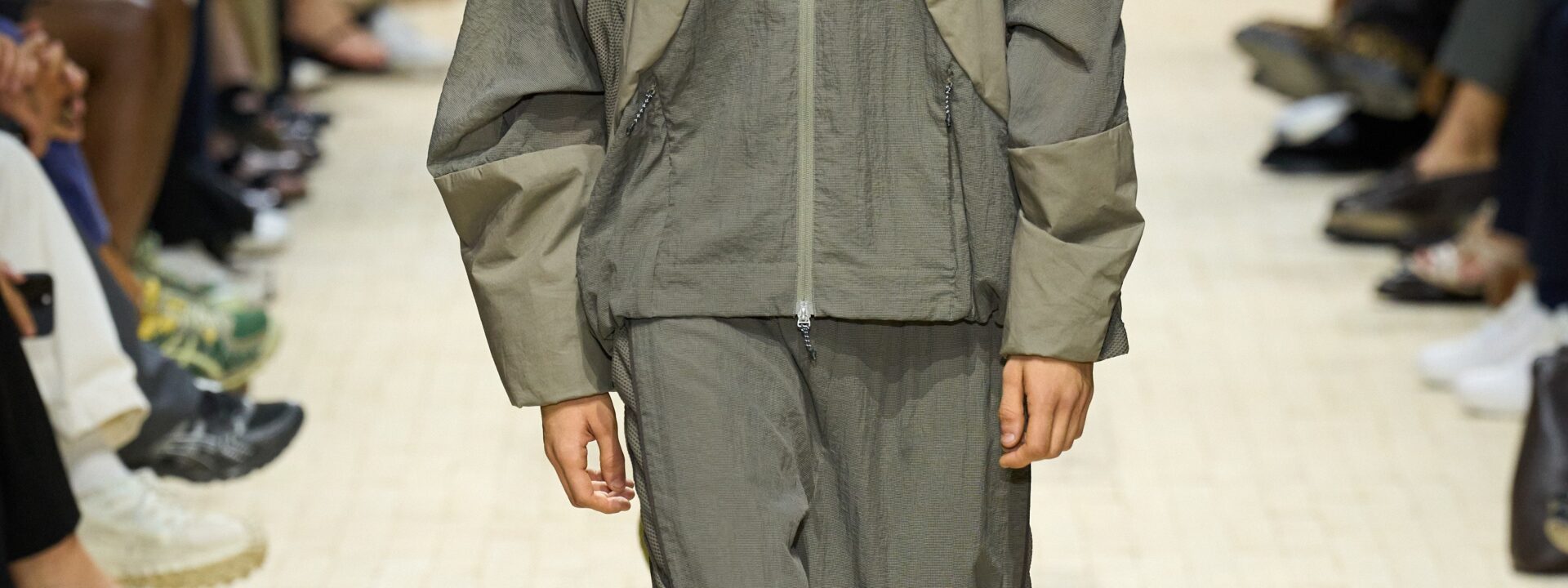Giorgio Armani may not have been physically present at his show—a first since 1975—but his influence was everywhere. Just before the event, he was on FaceTime with his backstage team. At exactly two minutes past the scheduled 7 PM start time, he called his top assistants, urgently asking why the show hadn’t begun. The lights flickered three minutes later, signaling everyone to take their seats. About fifteen minutes in, Leo Dell’Orco, Armani’s menswear design chief, took a bow to enthusiastic applause. Still, it felt unusual not to see Mr. Armani himself. The designer, who turns 91 next month, is recovering at home in Milan after a brief illness that reportedly led to a short hospital stay last weekend. Yet his absence didn’t overshadow the unmistakable clarity of his designs.
The show kicked off with a group of models striding swiftly down the clay-tiled runway in sleek, high-performance EA7 athletic wear. Their lightweight nylon track jackets and shorts featured geometric patterns that later appeared in the Emporio Armani collection—designs inspired by the intricate textiles of Morocco’s Taznakht region in the Atlas Mountains.
The collection had a nomadic spirit, as hinted by the embroidered carpet duffle bags paired with the first Emporio looks. To an untrained eye, the journey seemed to span North and Central Africa, along with Central Asia. According to the brand’s notes, the collection embraced “a core principle of Armani’s aesthetic: a deep curiosity about other cultures and a love for how people express themselves through everyday dress.”
It was refreshing to see menswear drawing from influences far beyond the usual Western boundaries. Even without a fashion expert’s insight, the clothes clearly referenced multiple traditions—offering a more globally inspired wardrobe than we typically see.
Highlights included tasseled clog mules, feathered tunics, billowing silk bloomer pants, wide-brimmed rattan hats with trailing fabric tails, and fringed necklaces with handcrafted charms. There were collarless jackets and matching pants in kaleidoscopic prints, draped shawls, a thickly stitched olive-green leather coat, and oversized fringed suede jackets. Some pieces featured metallic silk overshirts, linen smocks printed with elephants and giraffes, and stone-studded skull caps. Even Armani’s signature soft suiting made an appearance, but here it was reimagined in textured fabrics that echoed the collection’s adventurous, nomadic theme.
The show notes mentioned that some patterns symbolized “representations of infinity.” True to that idea, this was a boundless collection—one that, even from afar, let Mr. Armani take us on a journey without leaving home.
